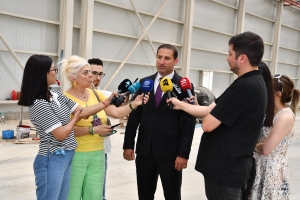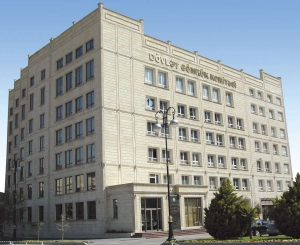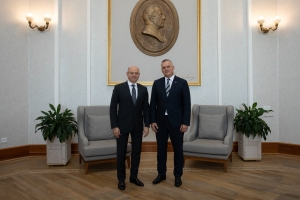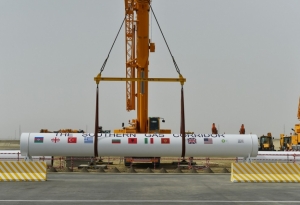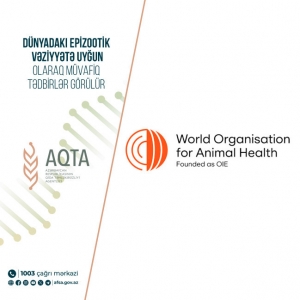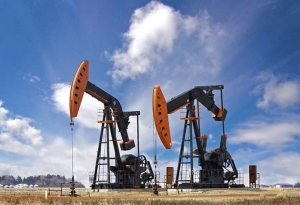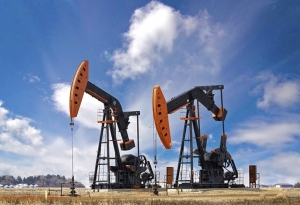Super User
Cari ildə Sumqayıt Kimya Sənaye Parkında 2 müəssisə fəaliyyətə başlayacaq
Bu il Sumqayıt Kimya Sənaye Parkında 2 müəssisənin (“Kartaş Kimya” MMC-nin tikinti kimyəvilərin, “Az-Tex-Import” MMC-nin “IVECO” markalı yüngül, orta və ağır tonnajlı yük avtomobillərinin istehsalı müəssisələri) fəaliyyətə başlaması nəzərdə tutulur. Bununla əlaqədar iyulun 17-də İqtisadiyyat Nazirliyinin İqtisadi Zonaların İnkişafı Agentliyinin təşkilatçılığı ilə Sumqayıt Kimya Sənaye Parkının rezidenti “Kartaş Kimya” MMC-nin tikinti kimyəvilərin istehsalı müəssisəsinə media nümayəndələrinin tanışlıq səfəri təşkil edilib.
“Kartaş Kimya” MMC-nin direktoru Necmeddin Taşbağ media mənsublarına zavodun tikintisi istiqamətində görülmüş işlər, qarşıda duran hədəflər barədə məlumat verib.
Caspian Energy Media İZİA-ya istinadən xəbər verir ki, artıq tikinti kimyəvilərinin istehsalı müəssisəsində tikinti işləri tamamlanmaq üzrədir. Yaxın aylarda müəssisədə avadanlıqların quraşdırılması işlərinə başlanılacaq. 250 nəfərin daimi işlə təmin ediləcəyi müəssisənin investisiya dəyəri 20 milyon manatdır, layihə üzrə indiyədək görülən işlərə artıq 15 milyon manatdan çox sərmayə qoyulub.
Zavodda tikinti kimyəvilərinin istehsalı ilə yanaşı, ölkə ərazisində ilk dəfə olaraq müxtəlif təyinatlı su izolyasiya materiallarının və zəmin döşəmə məhsullarının istehsalı nəzərdə tutulur.
“Kartaş Kimya” MMC-yə 2022-ci ildə Sumqayıt Kimya Sənaye Parkının rezidenti statusu verilib. Müəssisənin bu ilin sonunda fəaliyyətə başlaması planlaşdırılır. Sənaye müəssisəsi idxalın əvəzlənməsində və ixrac potensialının genişləndirilməsində əhəmiyyətli rol oynayacaq.
Azərbaycanın xarici ticarətinin müsbət saldosu 2,4 dəfə azalıb
2024-cü ilin ilk yarısında (yanvar-iyun) Azərbaycanın xarici ticarət əməliyyatlarının həcmi 21 milyard 768 milyon 181 min ABŞ dolları təşkil edib.
Caspian Energy Media Dövlət Gömrük Komitəsinin aylıq hesabatına istinadən xəbər verir ki, o cümlədən, ixrac əməliyyatları üzrə 12 milyard 900 milyon 980 min ABŞ dolları, idxal əməliyyatları üzrə 8 milyard 867 milyon 201 min ABŞ dolları ticarət qeydə alınıb. Müsbət saldo 4 milyard 33 milyon 778 min ABŞ dolları təşkil edib.
Müqayisə üçün qeyd edək ki, 2023-cü ilin ilk yarısında (yanvar-iyun) Azərbaycanın xarici ticarət əməliyyatlarının həcmi 26 milyard 166 milyon 413 min ABŞ dolları, ixrac 17 milyard 967 milyon 953 min ABŞ dolları, idxal 8 milyard 198 milyon 460 min ABŞ dolları, müsbət saldo 9 milyard 769 milyon 492 min ABŞ dolları olmuşdu.
Energetika naziri Sloveniyanın ətraf mühit, iqlim və energetika naziri ilə görüşüb
Energetika naziri Pərviz Şahbazov ölkəmizdə səfərdə olan Sloveniya Respublikasının ətraf mühit, iqlim və energetika naziri Bojan Kumerlə görüşüb.
Caspian Energy Media nazirliyə istinadla xəbər verir ki, görüşdə ölkələrimiz arasında təbii qaz və bərpa olunan enerji mənbələri də daxil olmaqla ikitərəfli və çoxtərəfli enerji əməkdaşlığının gündəliyinə daxil olan məsələlər müzakirə edilib. “SOCAR” və “Geoplin” arasında qaz təchizatı sahəsində imzalanmış Anlaşma Memorandumunun əməkdaşlığın genişləndirilməsi və Sloveniyanın enerji təhlükəsizliyinə töhfə verilməsi çərçivəsində əhəmiyyəti vurğulanıb.
"Cənub Qaz Dəhlizi" şirkətinin xalis mənfəəti azalıb
"Cənub Qaz Dəhlizi" QSC 2023-cü ili 1 milyard 277 milyon 785 min dollar xalis mənfəət ilə başa vurub. Şirkət 2022-ci ili 1 milyard 608 milyon 399 min dollar xalis mənfəət ilə bağlamışdı. Beləliklə, ötən il "Cənub Qaz Dəhlizi"nin xalis mənfəəti 330 milyon 614 min dollar və ya 20,5% azalıb
Caspian Energy Media “Marja.az”a xəbər verir ki, "Cənub Qaz Dəhlizi" QSC-nin gəlirləri 2022-ci ildə 2 milyard 649 milyon 957 min dollar ikən, 2023-cü ildə 3 milyard 66 milyon 384 min dollara yüksəlib (416 milyon 427 min dollar və ya 15,7% artıb).
Satışın maya dəyəri, nəqliyyat tarifləri, vergi ödənişləri, ümumi və inzibati xərclər gəlirlərdən daha çox artdığı üçün, Şirkətin xalis mənfəəti düşüb.
“Cənub Qaz Dəhlizi” Qapalı Səhmdar Cəmiyyəti Azərbaycan Prezidentinin 25 fevral 2014-cü il tarixli Fərmanı ilə yaradılmışdır. Şirkətin 51%-i Azərbaycan Respublikasına,, 49%-i SOCAR-a məxsusdur.
Şirkət Şahdəniz qaz-kondensat yatağının işlənməsi, Cənubi Qafqaz Boru Kəmərinin genişləndirilməsi, Trans-Anadolu Təbii Qaz Boru Kəməri (“TANAP”) və Trans Adriatik Boru Kəməri (“TAP”) layihələrinin həyata keçirilməsi məqsədləri ilə yaradılıb.
"SGC Upstream LLC Azerbaijan" (100%), "SGC Midstream LLC Azerbaijan" (100%) , "TANAP Doğalgaz Iletim A.Ş. (“TANAP A.Ş.”) Türkiye" (51%) və "AzTAP GmbH" (100%) "Cənub Qaz Dəhlizi" QSC-nin törəmə şirkətləridir.
Dünyadakı epizootik vəziyyətə uyğun olaraq müvafiq tədbirlər görülür
Azərbaycan Respublikasının Qida Təhlükəsizliyi Agentliyi başqa ölkələrdən respublikamızın ərazisinə keçə biləcək yoluxucu heyvan xəstəliklərindən qorunmaq məqsədilə Ümumdünya Heyvan Sağlamlığı Təşkilatından daxil olan məlumatlar əsasında dünyadakı epizootik vəziyyətə uyğun olaraq müvafiq tədbirlər həyata keçirir.
Caspian Energy Media AQTA-ya istinadən xəbər verir ki, Yunanıstan Respublikasının Fessaliya və Mərkəzi Yunanıstan inzibati ərazi vahidində xırdabuynuzlu heyvanların taun, Amerika Birləşmiş Ştatlarının Kolorado ştatında isə yüksək patogen quş qripi xəstəliyi qeydə alınıb.
Vance formally accepts Republican nomination for vice president
James David Vance formally accepted the Republican nomination to the post of the US vice president for the upcoming presidential election in the United States, Caspian Energy media reports, citing TASS.
"I stand here humbled, and I am overwhelmed with gratitude, to say I officially accept your nomination to be vice president of the United States of America," he told the Republican National Convention in Milwaukee, Wisconsin.
Qızıl bahalaşmağa davam edir
Nyu-Yorkun COMEX əmtəə birjasında qızılın bir troya unsiyasının qiyməti 0,35% artaraq 2,468.60 ABŞ dollarına bərabər olub.
Caspian Energy Media APA-ya istinadən xəbər verir ki, COMEX-də gümüşün bir unsiyasının qiyməti də 0,70% artaraq 30.59 ABŞ dollarına bərabər olub.
Azeri Light crude price exceeded $89
Azerbaijani oil price has increased on the world markets.
The price of a barrel of Azeri Light crude oil increased by $0,68, or 0,76%, settling at $89.27, Caspian Energy Media reports, citing AZERTAC.
Azərbaycan neftinin qiyməti 89 dolları ötüb
Dünya bazarında Azərbaycan neftinin qiyməti artıb.
Caspian Energy Media AZƏRTAC-a istinadla xəbər verir ki, “Azeri Light” markalı neftin bir barelinin qiyməti 0,68 dollar və ya 0,76 faiz artaraq 89,27 dollar olub.
Şəxsiyyət vəsiqəsi ilə bağlı yenilik
Dövlət və özəl müəssisələrdə xidmətlərdən istifadə zamanı şəxsiyyət vəsiqəsinin fiziki daşıyıcısını təqdim etmək məcburi olmayacaq.
Caspian Energy Media İRİA-ya istinadla xəbər verir ki, bundan sonra vətəndaşların tələb olunan şəxsiyyət vəsiqəsi məlumatlarını “mygov” tətbiqi vasitəsilə təqdim etməsi fiziki şəxsiyyət vəsiqəsinin təqdim edilməsinə bərabər tutulacaq. Belə ki, vətəndaş “mygov” tətbiqinə daxil olaraq rəqəmsal şəxsiyyət vəsiqəsi məlumatlarını müxtəlif üsullarla qarşı tərəflə bölüşə biləcək.




